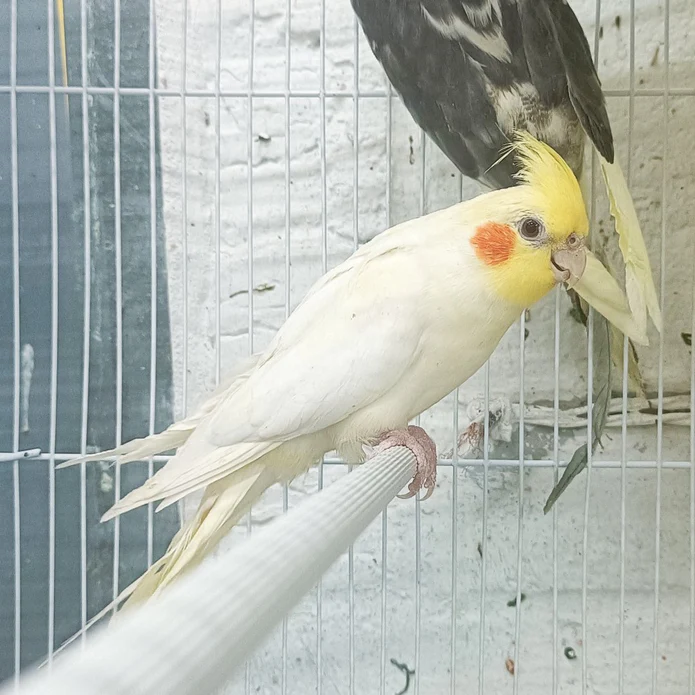Types Of Cockatiels
Pigments are responsible for producing color on cockatiels. Melanin pigments produce darker colors such as blue and grey. Lighter colors like yellow and orange are produced with the help of carotenoid pigments. Types of Cockatiels mutations occur when a pigment gene is changed in some way or muted altogether. Pigment mutations can be passed down from generation to generation, and because they are the only cockatoo species that can begin to reproduce within their first year,1 it makes it easily possible for cockatiel breeders to create specific colors and designs when producing cockatiels for sale.
Cockatiels for sale
Cockatiel White Albino
Cockatiel White Face Pearl
Cockatiel Grey White Face
Here are the most common cockatiel colors and mutations that you should be aware of:
The 7 Types Of Cockatiels & Varieties
1. Gray Cockatiel
Gray cockatiels are considered “normal” parrots because they do not display any pigment gene mutations. Their bodies are gray with white markings on their wings and tails. They typically display orange patches on their cheeks too. Female adults develop yellow specks on the head when fully grown, while the males tend to develop completely yellow heads. This is one of the most common cockatiel colors and we are the best cockatiel breeders in the US.

2. Yellowface Cockatiel
These cockatiels are a lot like the “normal” gray ones, but the patches on their cheeks are yellow instead of orange. They may also feature yellow feathering on the top of the head. But their bodies should be gray and white with color mutations displaying nowhere but on the head.

3. Whiteface Cockatiel
These birds retain their grey and white bodies like the yellowface, and gray (normal) do, but they do not have any yellow or orange color markings on their cheeks. Adult males feature white heads, sometimes with gray markings. Females usually have a completely gray face.

4. Pearl Cockatiel
Pearl cockatiels are unique in that they display a series of spots on their bodies, wings, and heads. These spots are referred to as pearls, hence their names. Pearl spots are typically white. These cockatiels typically have orange cheeks and sometimes show light yellow coloring on the face and you can buy from us, your #1 cockatiel breeders in the USA.

5. Silver Cockatiel
These cockatiels carry multiple pigment gene mutations that affect their originally gray coloring. Their mutations make their gray feathers look silvery. They do have some white markings on the wing and tail feathers. Their cheeks are usually yellow or orange and their head feathers tend to take on a yellow hue.

6. Fallow Cockatiel
Fallow or cinnamon cockatiels have a yellowish-brown body that looks muted or dull. They may still show some gray coloring on the wings and underside. Their eyes may display a slight red hue, and their white heads may display some yellow coloring different types of cockatiel birds.

7. Pied Cockatiel
These cockatiels feature random white patches on their bodies where pigmentation has been completely muted. These white patches can be any shape or size, and they can be positioned anywhere on the body. Therefore, no pied cockatiels ever look exactly the same. The pied cockatiel does have orange cheeks and yellow top feathers too.

Our Final Thoughts
There are lots of different types of Cockatiels colors and mutations to choose from when buying a cockatiel! It is important to remember that no matter the color or mutation variation a cockatiel has, every one of them is the same species and has the same health and care needs over time. So, you do not need to learn anything special about the particular color cockatiel you want. Just make sure that you understand how to properly care for cockatiels in general. Which cockatiel color or mutation is your favorite?







